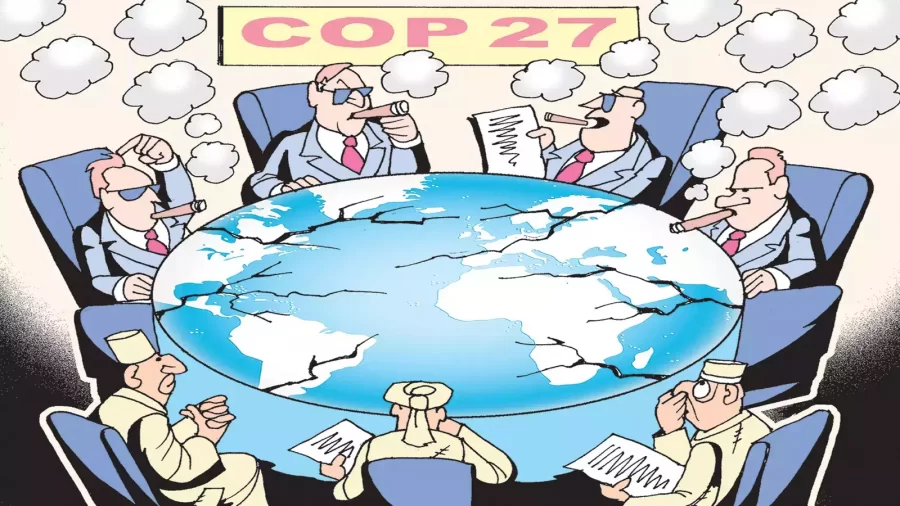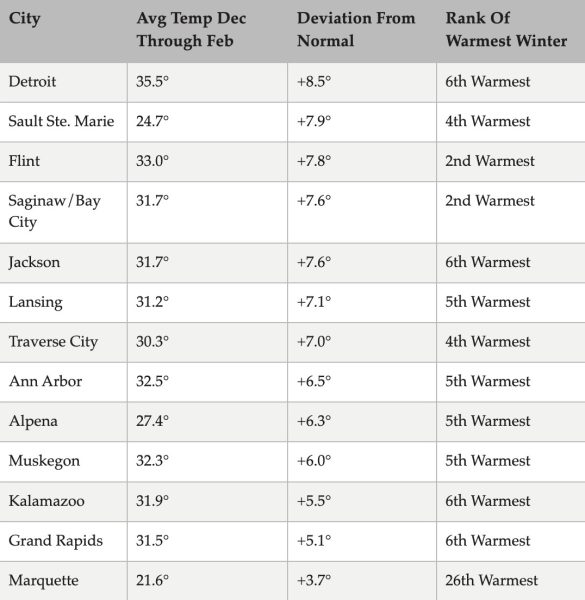COP27: What Got Done And What Did Not
From November 6 – November 20, 2022, 197 countries’ politicians, diplomats, and
representatives convened in Sharm el-sheikh, Egypt, for the United Nations Framework Convention on Climate Change’s (UNFCCC) 27th annual Conference of the Parties, known as COP27. Given that over 27 years, the conference has been unable to meet the 1.5 degrees celsius threshold for our survival, many question its efficiency. However, to mitigate the dire consequences of climate change, global action must be implemented, and some did.
Last year at COP26, 193 countries agreed to strengthen their climate action plans, but going into COP27, only 24 countries have submitted their revisions to the UN. Meanwhile, climate devastation has raged on: floods in Pakistan, droughts in Africa, and according to the Climate Action Tracker, current policies would mean warming of 2.7 degrees Celsius above pre-industrial levels. We need to be closer to 1.5 degrees to avoid disaster. That said, the pressure was on officials to tackle issues such as meeting the temperature requirement, loss and damages, and climate adaptation efforts.
Fortunately, many are happy with the conference’s reconciliation for loss and damages. Loss and damages refer to inevitable climate devastation even if we achieve necessary climate action. Since lower-socioeconomic countries are disproportionately affected by warming temperatures, despite their small contribution to greenhouse gas emissions, more developed countries with significant greenhouse emissions, like the United States and China, are expected to finance some of these reparations. Luckily, a considerable deal came through on November 20 to create a loss and damage fund that 27 nations, the European Union, and the United States, who all previously opposed the plan, joined. Another similar measure enacted by the conference, a “Global Shield,” a more specific fund that provides insurance and disaster protection after floods or droughts. Pakistan, Ghana, and Bangladesh will be some of the first recipients of this deal organized by the president of Germany. In cooperation with the V20 group of 58 climate-vulnerable economies, these funds will properly support vulnerable nations that are suffering or will suffer from climate-caused disasters.
Other triumphs include 150 countries’ signed pact to reduce methane emissions—50 more than last year—, Brazil returned to the summit ready to tackle climate action, and India pledged to achieve net zero emissions by 2070 with a plan to ensure its decarbonization commitment. Moreover, the US (President Biden) and China (President Xi) had their first in-person COP meeting since 2017. Even though China did not agree to limit methane emissions or fund developing nations, they did reopen negotiations with the United States, which had previously been tainted. This is huge since the countries are the world’s largest greenhouse gas emitters.
Even though there were a lot of positive outcomes at the summit, many question whether it was enough to combat the climate crisis. Although countries reaffirmed their commitment to the Paris Agreement (the goal to keep the warming of the atmosphere under 1.5 degrees Celsius), there were no mentions of limiting fossil fuel use in the final text, so it’s still being determined how this goal would be achieved. This could be because there were 636 oil and gas representatives at the conference. Fridays for Future, a youth-run climate action organization, records that fossil fuel lobbyists have been the largest representatives at COPs in the past. On top of that, COP27 was sponsored by Coca-Cola, the largest plastic polluter for the last four years. These ironic attendees could counteract possible deals, which many agree makes the conference seem more like greenwashing (it seems environmentally responsible but is more about public perception) than a resource for global change.
Furthering this narrative, each conference day was assigned a coordinating theme on which conversations or agreements were based. One of them is Youth & Future Generations Day, where youth are welcome to attend the event since they are often at the forefront of climate action. However, the inclusivity for youth may not be just that. First off, you need a badge to attend. Limited badges available from delegations mean youth are often unable to get one; if they do, they are expensive, eliminating several younger voices that can’t afford travel or a badge. Additionally, the few younger members with a badge are often left out of the monumental negotiations and only given voices during side conversations or public discussions. Thus, this day adds to the conference’s false promises since younger generations are not fairly represented.
Overall the conference has initiated several projects that will ensure the safety of vulnerable nations, but we still need further climate action commitments to avoid complete devastation. So far, the UN has added to the Loss and Damage fund, but on the other hand the US has continued to push fossil fuel objectives through congress. To ensure this year’s initiatives don’t fall short like previous ones have, we must urge leaders to prioritize and add to the loss and damage fund and put forth fossil fuel phase-out plans. This may look like contacting government representatives, voting, or signing petitions; any way constituents can advocate for climate reparations is vital in achieving our survival.
Hey everyone! My name is Sarah and this is my first year on staff. I’m so excited to be the editor for the sports section and get first-hand experience...












